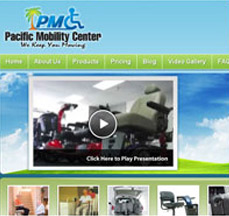How SEO has Changed Within the Last Three Years
For almost twenty years, Search Engine Optimization (SEO) has been used as an online marketing tool. And over that time span, SEO has changed and evolved as search engines, themselves, have grown and matured. The basic fundamentals of SEO are still important, however, and if done correctly will still yield favorable results. Content, performance, authority, and user experience are all concepts that have remained relatively constant.
Perhaps the major change in SEO began about a decade ago when Google became the top search engine and SEO authority, setting the bulk of SEO rules and standards. By changing its algorithms and administering discipline through search engine filters such as Panda and Penguin, Google severely restricted people who were trying to cheat the system by stuffing their websites with keywords or low-quality links in order to achieve high page rankings. Google and other search engines quickly put a stop to that practice, but in doing so, they have diminished the utility of keywords in general.
Over time, then, SEO’s new mantra became “content, content, content.” Rather than building a site for the sake of search engine attention, web designers were forced to create sites that their audiences would love and talk about online, which only then would get the attention of search engines. Of course, some webmasters tried to spin content by using text replacement tools to take one article and spin it into dozens of others that looked unique but did not provide any unique value. But that practice has since gotten harder and harder to do since Google became wise to the game. As keyword emphasis declined and spinning was cut off, the emphasis has been placed on pure, high-quality content.
Another seismic change occurred with the explosion of social media – especially Facebook which was founded in 2004, and has since become the dominant social media platform. A brand that can establish a reputation on social media can leverage that trust to bring users to its website. That site can then, ultimately, earn higher rankings based on the increased traffic generated via Facebook, Twitter, Instagram, etc. As social media became a prevalent force on the Internet, aligning it with SEO best practices became more and more important and continues to be a critical aspect of any SEO campaign.
Complementing the rise of social media has been the concomitant rise of mobile devices. It has been less than a decade since the first smartphones hit the market but they have since exploded into widespread use. Today, over 60 percent of adults with cell phones use them to access the internet and a third of mobile internet users go online almost exclusively on their phones. Ignoring mobile SEO has become a sure way to lose customers to the competition.
Another major change in the SEO landscape has been the arrival of Google Analytics. The ready and easy accessibility of the information presented by analytics suites has made it easier than ever for businesses to track everything from who visits their sites, to how long they stay, and what they click on.
Some of the more recent ways in which SEO has changed over the past few years include Google’s placing increased importance on mobile-friendly sites, brand mentions, and quality relationships with key influencers as opposed to simply creating more content. Also, businesses are more quickly integrating their SEO with their marketing departments and focusing more and more on actively engaging customers via social media. They are also trying to earn more quality inbound links and citations from respected publishers by providing more well-written blog posts to their targeted audiences.
 1-844-47-Click (1-844-472-5425)
1-844-47-Click (1-844-472-5425)







